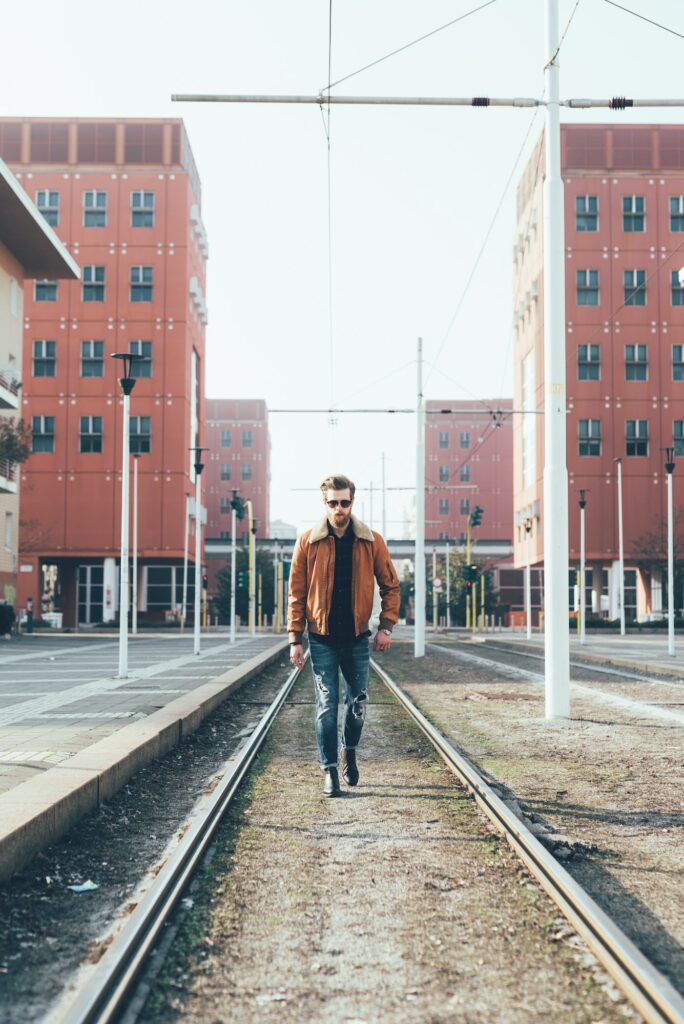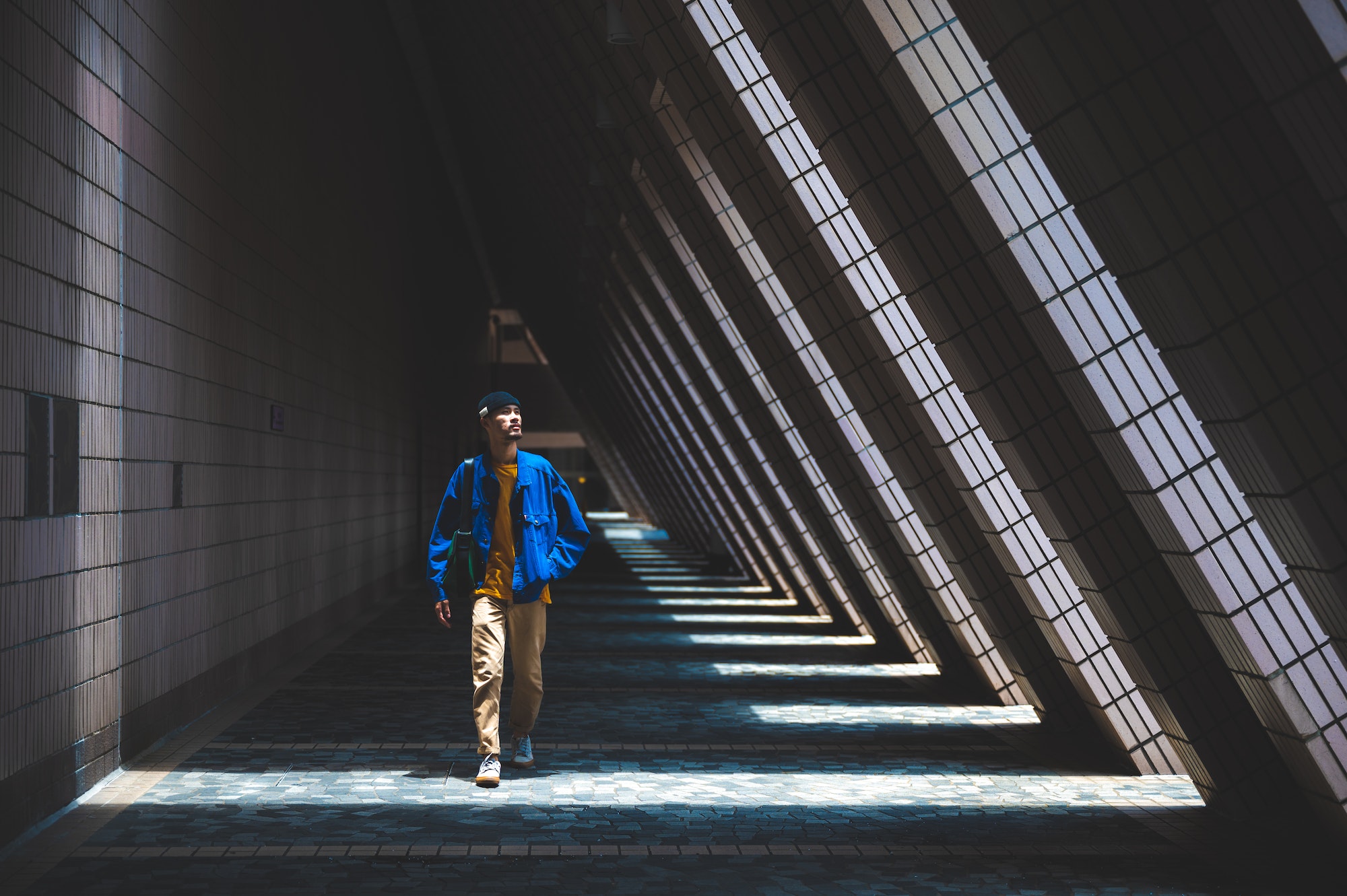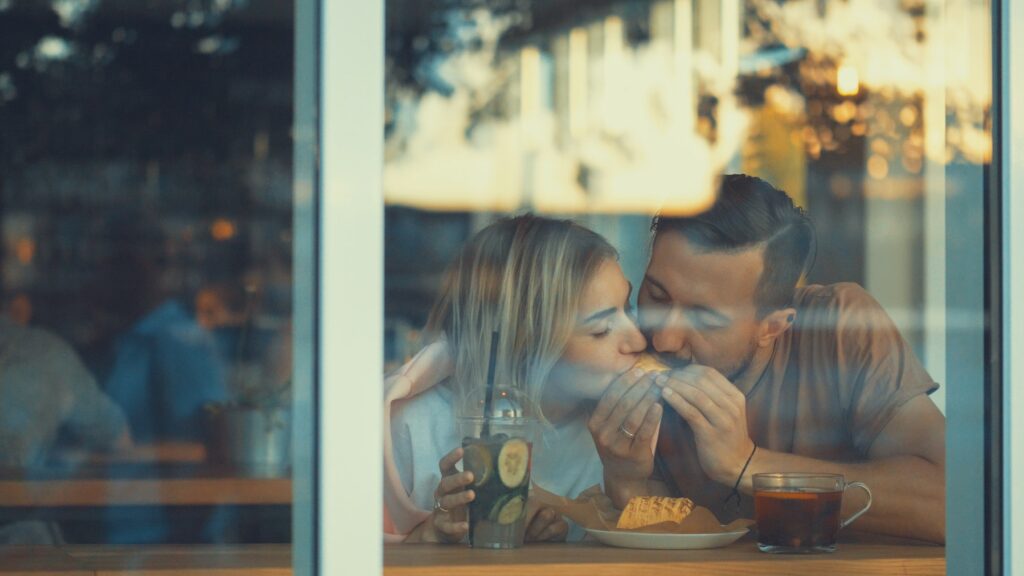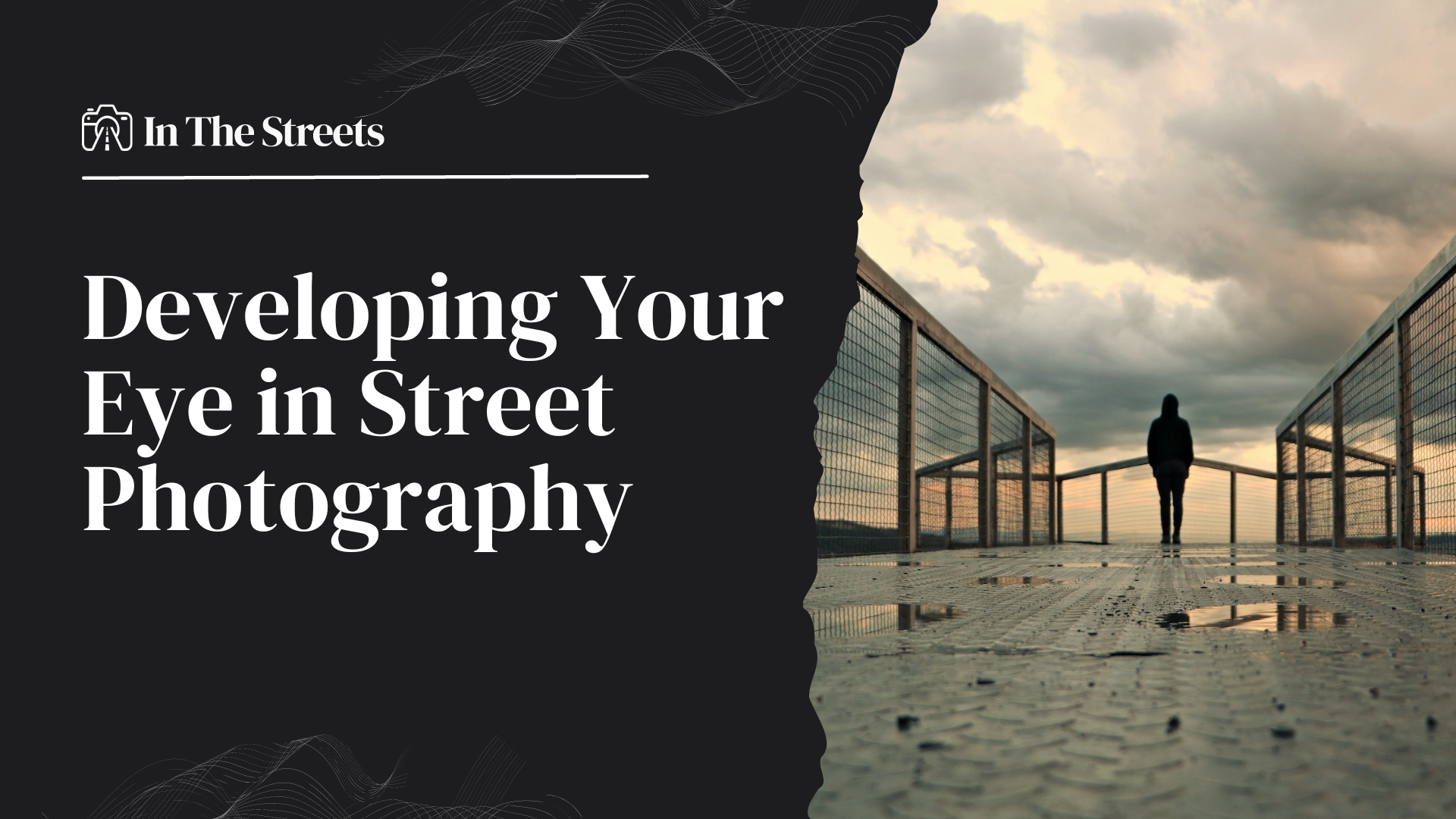Every city street, every town square, every bustling marketplace is a stage. Life unfolds on these stages, unscripted, filled with raw emotion and drama. It’s a world where beauty resides in fleeting moments and often overlooked details. For a street photographer, this world provides an endless source of inspiration and opportunity to create memorable images.
But, it isn’t just about capturing what you see; it’s about interpreting the scenes unfolding before your eyes and translating that into a photograph. It’s about looking beyond the obvious to find the extraordinary in the ordinary. This is the essence of developing your photographic eye – training yourself to see not just with your eyes, but with your mind and your heart.
In this guide, we will journey beyond the basics of camera settings and gear. We will delve into the art of seeing, the nuances of composition, the play of light and shadow, the subtle art of capturing emotion, the development of a unique style, and the power of telling stories through your images. By the end of this guide, you will have practical strategies and knowledge to elevate your street photography skills and create more compelling, visually striking photographs.
So, whether you’re wandering the lively lanes of Mumbai, the atmospheric alleys of London, or the vibrant streets of New York, you will be equipped to not only capture scenes but to create images that resonate, images that tell stories, images that make the viewer pause and think.
Let’s embark on this journey of refining your photographic eye, of going beyond the basics to the heart of what makes street photography such a compelling and powerful genre of photography.
The Art of Seeing
In the words of Dorothea Lange, the famous American documentary photographer, “The camera is an instrument that teaches people how to see without a camera.” And in no other genre of photography is this truer than in street photography.
The streets are filled with visual stimuli. At any given moment, there are countless potential subjects, an array of lighting conditions, and infinite possibilities for composition. The challenge lies not in finding these elements but in seeing them. Seeing, in the context of photography, involves more than just looking. It’s about observing, interpreting, and visualizing. It’s about seeing the potential for a photograph in an everyday scene. This is the art of seeing, and it is the first key to developing your photographic eye.
Consider the work of Henri Cartier-Bresson, often hailed as the pioneer of street photography. His concept of “the decisive moment” is all about seeing – it’s about recognizing that precise instant when the visual and emotional elements of a scene come together to create a compelling image. It’s about seeing the significance in a fleeting moment that others might miss.
So, how do you cultivate this ability to see? First and foremost, slow down. Rushing through the streets with your camera is akin to skimming through a book. You might finish it quickly, but you’ll miss the nuances of the story. Slow down, observe, immerse yourself in the environment. Look at the interplay of light and shadow, the way people are interacting, the juxtaposition of elements.
Next, practice mindfulness. Be present in the moment. The streets are dynamic, ever-changing. A moment lost is lost forever. Being mindful keeps you in the present, alert to the possibilities unfolding around you.
Lastly, visualize. Before you press the shutter, take a moment to visualize the final image. Consider how different elements will come together in the frame, how the story will unfold.
Mastering Composition
Composition is the arrangement of elements within the frame. It’s the visual grammar that guides the viewer’s eye and makes an image visually appealing. In street photography, composition can transform a mundane scene into a captivating image.
The “Rule of Thirds” is perhaps the most widely known rule of composition. It involves dividing your frame into a 3×3 grid and positioning your main subject or points of interest along these lines or their intersections. While this rule can create balanced and engaging images, remember, rules are meant to be broken. Use it as a starting point, not a rigid guideline.
Other compositional techniques include the use of leading lines, which can guide the viewer’s eye towards your subject, framing, which uses elements within the image to frame and draw attention to your subject, and the use of negative space, which can create a sense of balance and add emphasis to your subject.

A key aspect of composition in street photography is spontaneity. Unlike other genres of photography, where you have the luxury of carefully planning and arranging your composition, street photography is unpredictable. You have to think on your feet, react quickly, and often rely on your instincts. But with practice, these compositional techniques can become second nature.
One way to improve your compositional skills is to study the work of others. Look at photographs that you admire, analyze their composition, and try to understand what makes them effective. Consider the work of Alex Webb, a renowned street photographer known for his complex compositions. His images often feature multiple layers, with various elements, shadows, and reflections interacting within the frame. It’s a beautiful chaos, a tapestry of life on the streets, masterfully woven together through effective composition.
Another practical exercise is to choose one compositional technique and focus on that during your photo walks. This approach can sharpen your eye for composition and help you see the streets in new ways.
Remember, effective composition is more than just arranging elements within a frame. It’s a tool for storytelling. It can create context, evoke emotions, and add depth to your images. Mastering composition is a critical step in developing your photographic eye.
Harnessing Light and Shadow

Photography, at its core, is about capturing light. Understanding and harnessing the power of light can elevate your street photography from good to extraordinary.
When shooting on the streets, you’re at the mercy of natural light. Unlike studio photography, you can’t control the quality or direction of the light. What you can control is your perspective and timing.
Early morning and late afternoon, often referred to as the “golden hours,” offer beautiful, soft, directional light that can add warmth and depth to your images. Shadows are longer, creating interesting shapes and patterns.
But don’t limit yourself to these hours. Harsh midday light, often avoided in other genres of photography, can create bold contrasts and striking, high-key images in street photography. Overcast days provide diffused light, reducing shadows and evening out tones.
Shadow, the absence of light, is as crucial as light in street photography. Shadows can create depth, add mystery, and form graphic elements in your images.
Consider the work of Trent Parke, the only Australian photographer in the Magnum Photos collective. Parke’s use of light and shadow is striking. He uses them not just as a photographic technique, but as a storytelling tool, creating images that are dramatic, moody, and filled with mystery.
To improve your ability to use light and shadow, observe how light changes throughout the day and how it interacts with the environment. Study the work of photographers known for their use of light and shadow. And most importantly, experiment. Play with different light conditions, angles, and settings.
Understanding and harnessing light and shadow is like learning a new language. It allows you to express and interpret the world around you in new and exciting ways, enhancing your photographic eye.
Capturing Emotion and Human Connection

One of the most compelling elements of street photography is its ability to capture raw, unfiltered human emotion. The streets are a theater of life, filled with joy, sorrow, humor, surprise, and every emotion in between. As street photographers, our job is to observe and capture these fleeting moments of human connection.
Capturing emotion in street photography can be challenging. It involves being in the right place at the right time, being observant, and often, being invisible. You’re not just capturing faces; you’re capturing feelings, moods, and moments. It requires empathy, patience, and sometimes, a bit of luck.
But when done right, these images can be powerful. They can tell a story, evoke emotion, and create a sense of connection between the subject and the viewer.
Look at the work of Vivian Maier, a nanny and street photographer whose remarkable body of work was discovered only after her death. Her photographs capture the essence of life in mid-20th century America, with a particular emphasis on the human condition. Her images are poignant, humorous, and deeply human.
To improve your ability to capture emotion and human connection, start by observing. Watch people, their interactions, their expressions. Learn to anticipate moments. Practice patience. Not every outing will yield a powerful image, and that’s okay. It’s part of the process.
Also, understand and respect your subjects. Street photography involves taking photos of people in public spaces, and while it’s generally legal, ethical considerations come into play. Always respect people’s privacy and dignity. If someone seems uncomfortable, it’s best to move on.
Capturing emotion and human connection in street photography is not just about technique; it’s about humanity. It’s about sharing moments of life as they unfold, in all their raw and unfiltered glory.
Developing a Unique Style and Perspective
Developing a unique style is a critical aspect of advancing in your street photography journey. Your style is your visual signature. It’s what sets you apart and makes your work recognizable.
Your style is influenced by your perspective, your vision, and your interpretation of the world. It’s shaped by your experiences, your influences, and even your gear. And while it can be inspired by others, it’s ultimately a personal journey of discovery and expression.
Developing your style doesn’t happen overnight. It’s an ongoing process, a journey that evolves as you evolve as a photographer.
Start by understanding what draws you in. What do you find yourself naturally gravitating towards? What kind of images do you enjoy making? This introspection can provide valuable insights into your inherent style.
Next, study the work of photographers you admire. Analyze their style, understand what you like about it, and draw inspiration from it. But be careful not to imitate. As Pablo Picasso famously said, “Good artists copy, great artists steal.” This means that you should take what resonates with you and make it your own, rather than copying it verbatim.
Another effective way to develop your style is to work on a project or a theme. This not only provides direction but also allows you to explore a subject or a concept in depth, thereby giving you a chance to express your perspective.
Consider the work of Saul Leiter, an American artist and early pioneer of color street photography. Leiter had a unique style characterized by his use of color, reflections, and composition. His images have a painterly quality, a result of his background in painting, and his work has had a significant influence on contemporary street photography.
Remember, developing your style is a journey, not a destination. It’s an ongoing process of exploration, discovery, and self-expression. And along the way, you’ll develop your photographic eye, one that sees the world in a way that’s uniquely yours.
Your Journey Towards Mastering Street Photography
You’ve come to the end of this guide, but this is just the beginning of your journey towards developing your eye in street photography. We’ve journeyed together through the realms of composition, lighting, capturing emotion, and developing your unique style. Each of these aspects forms a critical piece of the larger puzzle that makes up successful and compelling street photography.
Understanding and mastering composition will give your images a strong structural foundation. You’ll know where to place your subjects, how to leverage lines, shapes, and forms, and how to balance elements within your frame. But remember, rules are there as guides, and sometimes, the most compelling photos are born when these rules are deliberately broken. So, learn them, master them, but don’t be afraid to step beyond them when your instinct guides you.
Effective use of light and shadow can transform a mundane scene into something magical. It breathes life and depth into your images and can be used to highlight or hide elements, creating mood, contrast, and drama. As a street photographer, the world is your studio, and light, your most potent tool. Be observant, patient, and adaptable, and you’ll start to see light in a way you never have before.
Capturing emotion and human connection is at the heart of street photography. It’s about people, about life, about the world around us in its raw and unfiltered form. This requires empathy, patience, and the ability to be in the moment. Embrace the beauty of life in all its forms, and your images will tell stories that resonate with viewers on a human level.
Finally, developing your unique style is a critical part of your journey. Your style is your visual signature, an extension of who you are as a person, and what you see as a photographer. This is not a race; it’s a journey. A journey of exploration, discovery, and growth. Take your time, be patient with yourself, and most importantly, enjoy the process.
Street photography is a window to the world, a mirror to the soul, and a voice that tells a story. It’s an art form that’s as diverse as it is profound. And in this dance between the photographer, the subject, and the viewer, we find connection, meaning, and humanity.
As you venture forth on your journey, remember this quote by renowned photographer Elliott Erwitt, “Photography is an art of observation. It has little to do with the things you see and everything to do with the way you see them.” As you continue to develop your photographic eye, keep this in mind. It’s not just about what you see; it’s about how you see it.
Take this knowledge you’ve gained, and put it to practice. Shoot consistently, review your images critically, learn from your successes and your failures. Join a community of street photographers, share your work, give and receive feedback. Remember, the best way to grow as a photographer is by shooting, learning, and shooting some more.
In closing, thank you for joining us on this journey. We hope this guide has provided you with practical and actionable insights that will help you develop your eye in street photography. The streets are waiting, filled with stories waiting to be told. So grab your camera, step out, and start capturing the world as you see it.
We, at In The Streets, look forward to seeing the beautiful and compelling images you’ll create. Remember, every shot you take brings you one step closer to the photographer you aspire to be. Keep shooting, keep learning, keep growing. You’ve got this!



